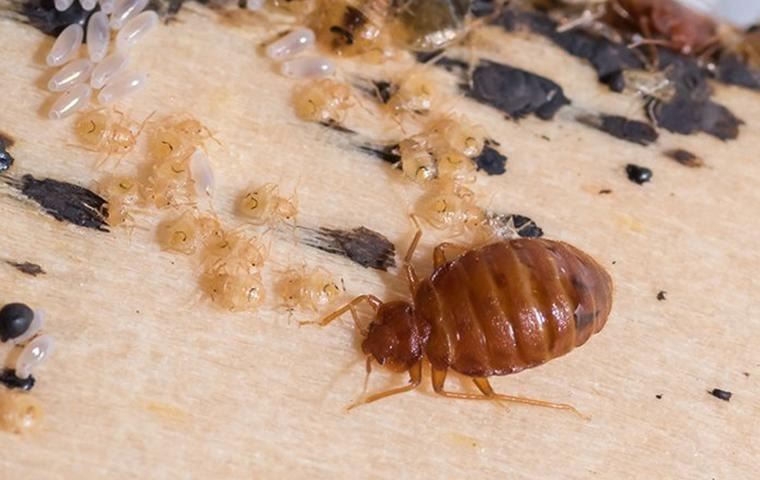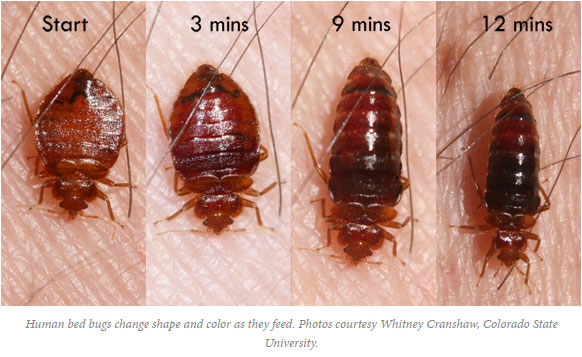Get Educated Concerning the Kinds of Pest Control Techniques and Their Advantages for House Owners
Comprehending the different insect control methods available to home owners is crucial for reliable insect administration. House owners who are educated can make strategic choices that not only address pest problems yet also boost the general high quality of their living environment.
Chemical Insect Control Approaches
Chemical insect control methods are an important element of integrated parasite management strategies for homeowners looking for efficient options to pest infestations. These methods entail the application of chemical compounds made to eliminate or hinder bugs that intimidate individual property, health and wellness, and convenience. Common chemicals utilized consist of insecticides, rodenticides, herbicides, and fungicides, each customized to target particular parasites.
The primary benefit of chemical parasite control is its quick effectiveness; many formulations provide prompt results, decreasing pest populaces dramatically in a short time. Additionally, advances in chemical formulations have actually resulted in items that are much more eco-friendly and have lower toxicity levels for non-target microorganisms when used properly.

Biological Pest Control Strategies
Natural bug control approaches have actually gotten importance as house owners look for more secure and extra sustainable alternatives to conventional chemical approaches. Biological bug control techniques make use of natural killers, bloodsuckers, or virus to take care of pest populaces successfully. This method is not only ecologically pleasant but likewise reduces the threat of damage to non-target types, including helpful bugs and wildlife.
One of the most usual organic control methods entails introducing all-natural predators into the environment. Ladybugs can be used to control aphid populations, while nematodes target soil-dwelling pests like grubs. Furthermore, parasitoids-- organisms that live on or within a host-- can be employed to regulate certain pest species by laying eggs inside them, ultimately bring about their death.
An additional strategy is using biopesticides, which are acquired from natural products such as plants, microorganisms, or minerals (bed bug exterminator). These items can effectively target parasites while posing marginal risk to family pets and humans. On the whole, biological insect control techniques give house owners with an effective methods of bug monitoring that lines up with eco-friendly principles, promoting a healthier living atmosphere while decreasing reliance on synthetic chemicals
Mechanical Parasite Control Methods
Mechanical pest control methods incorporate a selection of approaches that physically avoid or eliminate insects without the usage of chemicals. These methods are especially advantageous for homeowners looking for environmentally friendly choices while ensuring the safety of their space.
One typical technique is making use of obstacles, such as catches, displays, and nets, which protect against pests from entering homes or certain locations. Mounting window displays can effectively keep bugs out, while making use of physical obstacles around yards can hinder larger insects like deer or bunnies. In addition, mechanical traps created for rats can capture and remove these pests without the need for toxic materials.
One more efficient strategy includes making use of mops and vacuums to eliminate insects straight from surface areas. Routine cleansing and maintenance can dramatically reduce insect populations by eliminating food sources and hiding areas. Furthermore, using tools like ultrasonic insect repellents can deter numerous insects via acoustic wave that are undesirable to them yet inaudible to humans.
Cultural Pest Control Practices
Cultural bug control techniques concentrate on changing the environment and monitoring strategies to create problems that are less for pest problems. These methods are essential in maintaining a balanced environment and decreasing the reliance on chemical treatments. By altering farming methods, property owners can efficiently hinder insects while advertising plant health and wellness.
One usual strategy consists of crop turning, which interrupts the life cycles of parasites by changing the sorts of plants expanded in a certain area (bed bug exterminator). This not only minimizes pest populations yet additionally improves soil wellness. Additionally, intercropping-- growing diverse crops in proximity-- can perplex pests and decrease their ability to find their preferred host plants
Water monitoring is one more essential aspect of social methods. Correct watering click over here techniques can avoid standing water, which serves as a reproduction ground for mosquitoes and other parasites. Maintaining tidiness in and around the home, such as frequently removing debris and food waste, can dramatically reduce bug attraction.
Incorporating these social techniques right into an extensive parasite administration strategy allows house owners to create an atmosphere that normally hinders insects, therefore enhancing the performance of various other control methods while promoting sustainable horticulture and landscaping.

Integrated Bug Management Approaches
Integrated Parasite Monitoring (IPM) represents an alternative approach that incorporates different approaches to properly manage insect populaces while minimizing environmental impact. This approach incorporates organic, cultural, physical, and chemical techniques to attain sustainable pest control. By analyzing pest populaces and their natural adversaries, IPM highlights monitoring and recognizing bugs before applying termite insecticide control procedures.
One of the core concepts of IPM is making use of thresholds, which develop the level of bug activity that necessitates intervention. This ensures that therapies are used only when necessary, minimizing the reliance on chemical pesticides. Biological control approaches, such as introducing all-natural predators or bloodsuckers, operate in combination with social methods like plant rotation and environment adjustment to interrupt pest life process.
Additionally, IPM urges making use of least-toxic chemical choices when treatment is required, focusing on items that position marginal threat to non-target organisms and the atmosphere. For homeowners, embracing IPM comes close to not just enhances the effectiveness of parasite management however likewise advertises a healthier living environment, promoting biodiversity and lowering chemical exposure. Ultimately, IPM equips home owners to make enlightened decisions that balance insect control with environmental duty.
Conclusion
In verdict, understanding the different parasite control methods equips home owners to make informed choices pertaining to pest management. Each technique-- chemical, organic, mechanical, cultural, and integrated bug monitoring-- offers distinct benefits that provide to various demands and preferences.
Understanding the different bug control approaches available to property owners is necessary for reliable pest management.Chemical insect control techniques are an important part of incorporated parasite management strategies for property owners seeking effective services to pest invasions. In general, biological bug control techniques offer property owners with an efficient means of pest management that aligns with eco-friendly concepts, advertising a healthier living atmosphere while decreasing reliance on artificial chemicals.
Social bug cockroach prevention control methods focus on changing the setting and administration methods to create problems that are much less conducive to pest infestations.In verdict, comprehending the various pest control approaches equips property owners to make enlightened choices concerning pest management.